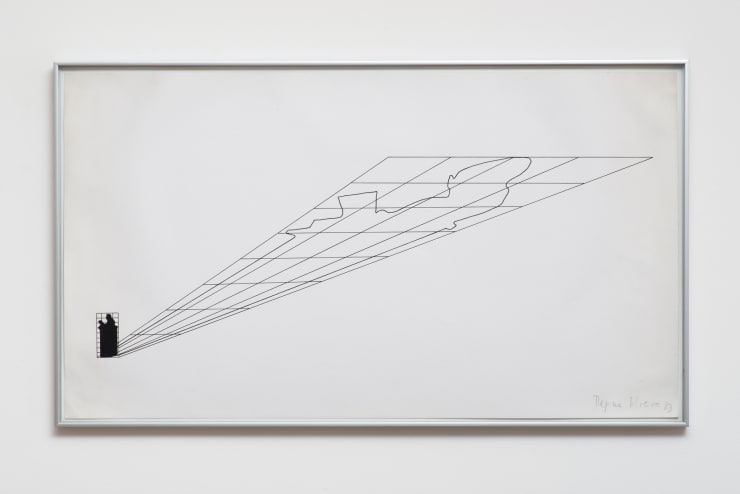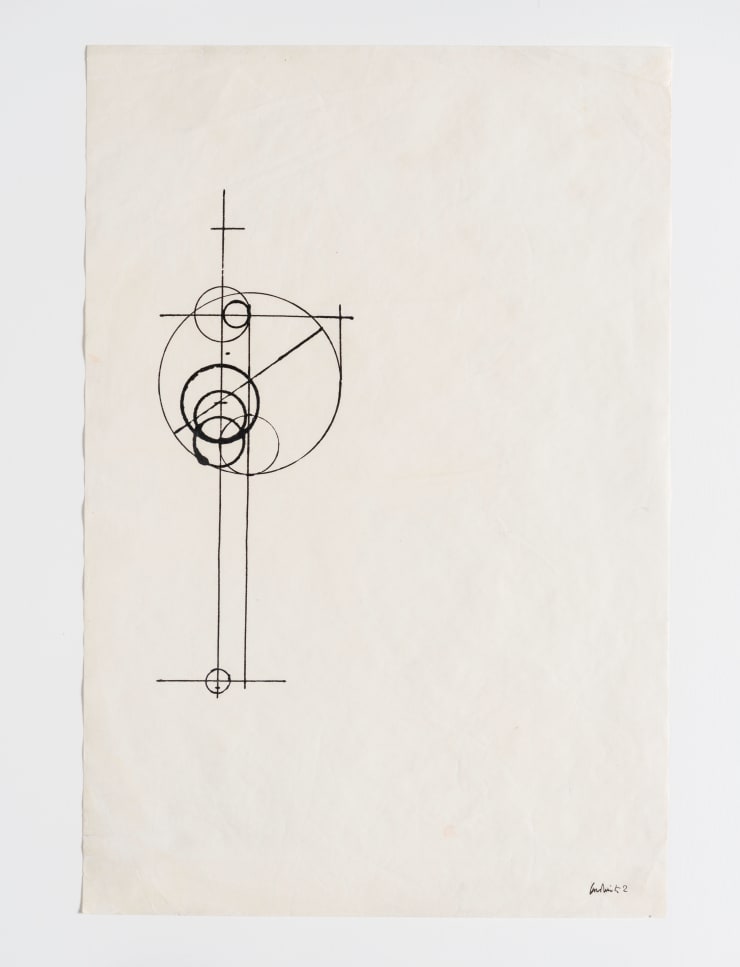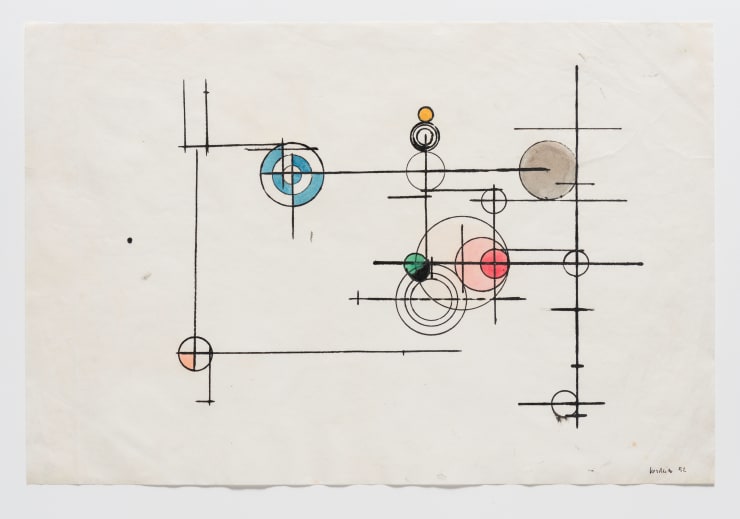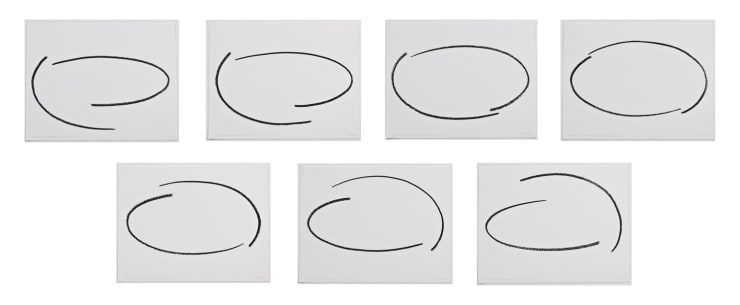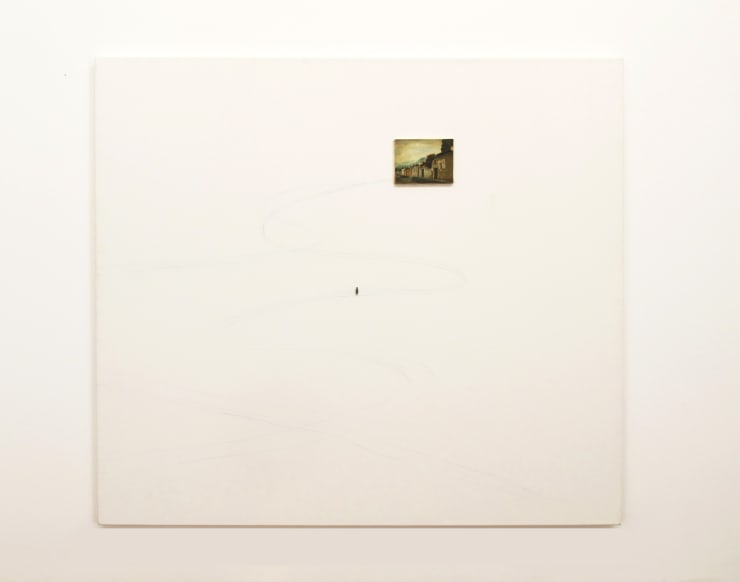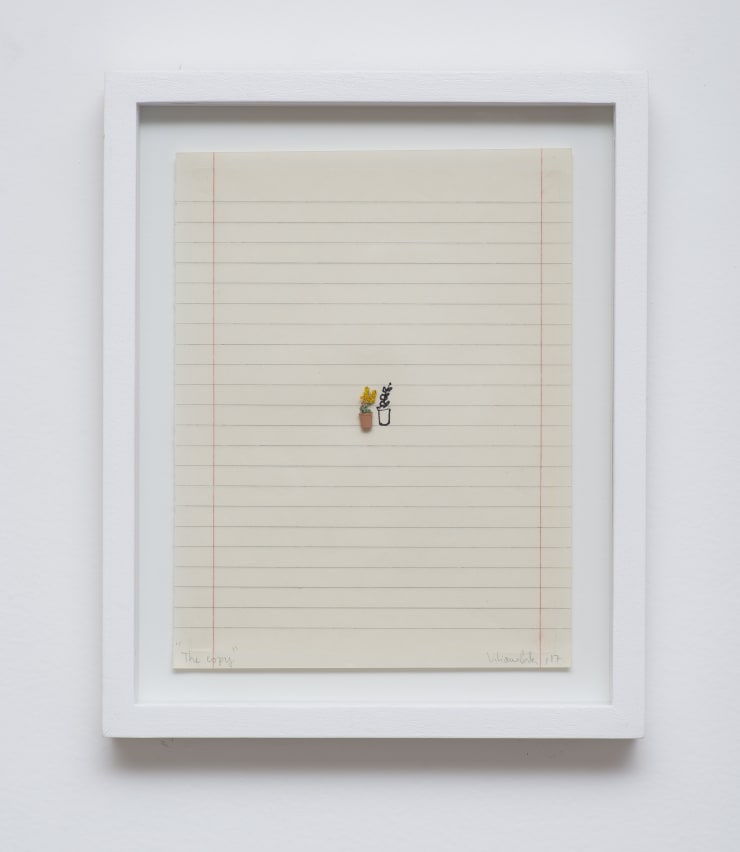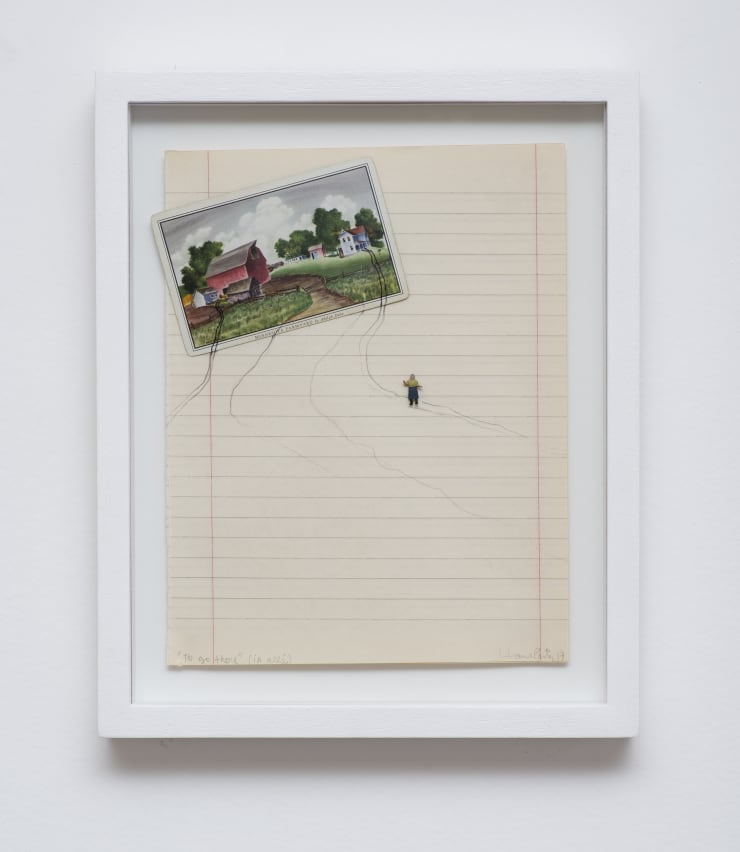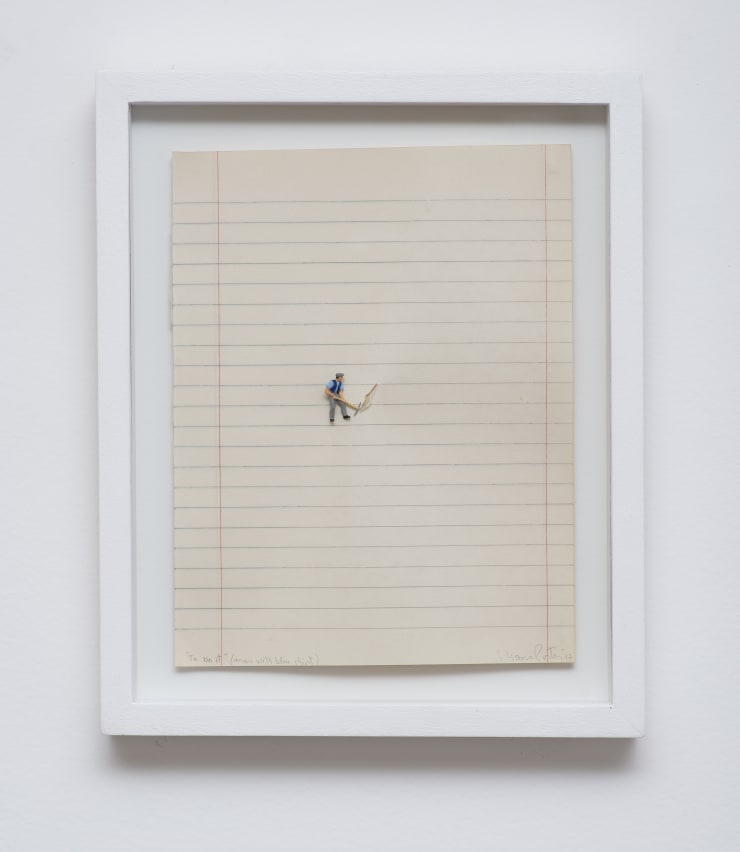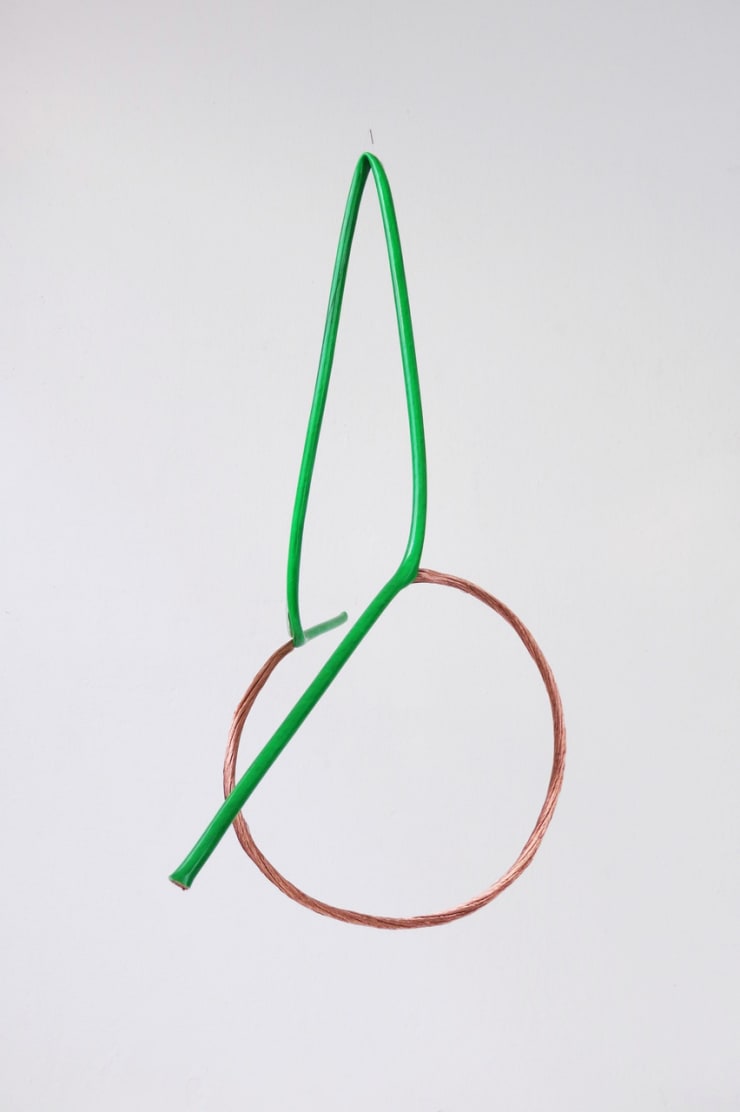-
ANTHONY MCCALL | AUGUSTO DE CAMPOS | BOSCO SODI | CAIO REISEWITZ | GERALDO DE BARROS | LILIANA PORTER
MARINA ABRAMOVIC | PABLO LOBATO | RAFAEL CARNEIRO | REGINA SILVEIRA | ROCHELLE COSTI | WALDEMAR CORDEIRO
-
Art making goes through various stages as part of the artist's creative process, which ranges from its conceptualization to its aesthetic and imagery layers. Although each process is unique and personal, every artist has a common goal: to communicate. Understanding the importance of processes in artistic manifestations, Luciana Brito Galeria presents a set of works that reflect the diversity and individuality of each artist in the exercise of experimentation, with works by Liliana Porter, Regina Silveira, Geraldo de Barros, Waldemar Cordeiro, Marina Abramovic, Caio Reisewitz, Anthony McCall, Pablo Lobato, Bosco Sodi, as well as new works by Rafael Carneiro, who currently features a solo show “House, Family, Delight” at the gallery. Using an organic and free method, Rafael Carneiro proceeds from the meaning of the figures used, which are decontextualized, articulated and resignified.
-
Augusto de Campos
1931 São Paulo, Brazil. Lives and works in São Paulo, Brazil.These historical works by Augusto de Campos are part of a series of original manuscripts made using the dry transfer letters known as Letraset. This is one of the creative devices that the poet-artist used to construct his concrete poems.
-
-
Regina Silveira
1939 Porto Alegre, Brazil. Lives and works in São Paulo, Brazil.The series, focusing on projective distortions and its ability to critically alter the meanings of the appropriate images, is part of the artist's doctoral thesis from 1984. Other works from this same imagery can be seen in her solo exhibition at MAC-USP, “Regina Silveira: Outros Paradoxos” [Other paradoxes], which takes place concurrently to the next edition of the Sao Paulo Biennial, where the series will be exhibited in its entirety and original format.
-
Waldemar Cordeiro
1925 Rome, Italy. 1973 São Paulo, Brazil.Leader of the Brazilian Concretist movement, the artist used an interdisciplinary research and explored the specificities of drawing, with basic, self-sustaining colors and lines, to think about the concretion of his works.
-
-
Geraldo de Barros
1923 Chavantes, Brazil. 1998 São Paulo, Brazil.The paintings/objects the artist made in the 1980s use basic colors and geometric shapes that facilitated their production. Before effectively producing these works, the artist studied their possibilities in drawings and collages. These concepts, in conjunction with the use of Formica as a support, were essential for imparting a more “industrial” identity to the works.
-
-
Anthony McCall
1946 St.Paul's Cray, England. Lives and works in New York, USA.One of the artist’s most emblematic series consists of sculptures of solid light, where the light becomes three-dimensional by means of smoke. In the drawings of the series, such as Meeting You Halfway II (2011), we see paths configured by the projected lines of the animation.
-
Marina Abramovic
1946 Belgrade, Yugoslavia. Lives and works in New York, USA.The artist, herself, is the starting point for the creation of her works. An example is the installation 97 Pisama/97 letters (2008), where she compiled the first phrases of letters that she did not have the courage to open for years. As though in an act of boldness to confront her fears, these works are now gathered in a single work. For its part, the series Spirit Cooking (1996) represents the artist’s first experiments with printmaking. They are pages of a book about aphrodisiac poems/recipes, accompanied by pictures linked to her corporal practice.
-
Bosco Sodi
1970 Mexico City, Mexico. Lives and works in New York, USA and Puerto Escondido, Mexico.This series of paintings precisely reflects the artist's research, who manages to value the power of the simplicity of natural materials, such as fibers and pigments. These elements are combined through a production with striking gestures, giving an original character to each of the works. His practice also carries ancestral techniques that rescue his Latin American origin.
-
-
Liliana Porter
1941 Buenos Aires, Argentina. Lives and works in New York, USA.Based on a collection the artist has amassed of images and small objects, she works on various supports including paper, photography, videos and installations, in order to bring the observer face to face with allegorical and distorted narratives of reality and time, called vinhetas teatrais [theatrical vignettes].
-
-
Caio Reisewitz
1967 São Paulo, Brazil. Lives and works in São Paulo, Brazil.The title of the work Ambé (2021) refers to the indigenous Tupi culture and names an indigenous community in the state of Amapá. Paradoxically, it also denotes something hard and rough, defined in the book A Queda do Céu, by Davi Kopenawa, as a place in dreams where indigenous children played. The artist resignified these meanings through the image of a dense, thick forest which has been subtly manipulated. For its part, the video Escuto Mata (2021) is charged with criticism of the unbridled exploitation of the Brazilian forests through a poetic narrative of construction with sounds that come from the forest, during the sunrise and sunset.
-
CAIO REISEWITZ
Escuto Mata, 2021
Vídeo; analógico e digital, som stereo, 4K Match Frame Rate
Video; analogue and digital, stereo sound, 4k Match Frame RateDuração | Duration 01'03"
Ed 2/5
-
Rochelle Costi
1961 Caxias do Sul, Brazil. Lives and Works in São Paulo, Brazil.The video “Há Casas” [There are houses] (2018) brings a compilation of images taking during the Procession of Círio de Nazaré, 2017. The event, which takes place in Belém (Para State), gathers faithful people carrying their votives and miniatures of houses, each representing their desire for housing. The images are combined with others from the real houses of the city of Jordão (Acre State). The narrative draws parallels between reality and the projection of the dream of owning a home, while highlighting the typical constructive architecture of the Amazon region. In the end, the video positions the artist herself in her current residence in São Paulo, in addition to recovering a room of the house where she was born, in Caxias do Sul (Rio Grande do Sul State), both spaces of affection for Rochelle. The photograph “Casa no Céu” [House in the Sky] (2008) is also part of the video's scenery.
-
ROCHELLE COSTI
Há Casas, 2018
Video
Duração | Duration: 03'
Ed 1/3
-
Pablo Lobato
1976 Bom Despacho, MG, Brazil. Lives and works in Belo Horizonte, Brazil.Pablo Lobato’s research operates according to each material and context, making the articulation of his works concern a sensorial awakening. In Ah (2021), the artist works on the formal aspects of an insulated copper wire, attributing new vectors and organic lines to it. In the sculpture Paralelas (2021), a long piece of wood is placed alongside an analogous piece in bronze. Along with the mirroring effect, we also see the disparity of the materials. The wood – organic and reactive to time – used here is a long square-sectioned strip produced as scrap during the sawmill process of turning pine logs into perfectly rectangular boards.
-
Rafael Carneiro | on view "Casa Família Deleite"
1985 São Paulo, Brazil. Lives and works in São Paulo, Brazil.This exhibition occupies not only the gallery’s annex, but also the settings in the former modernist residence, designed by Rino Levi. "Casa Família Deleite" presents a further unfolding of the artist’s continuous research: paintings and drawings (twenty artworks in total), conceived in the last two years and being shown here for the first time. Rafael Carneiro presents a diverse group of works, which seeks to escape from the normal labels and commitments of painting, to approach the complex universe of the images of culture and collective imagination. With an organic and free method, he begins with the meaning of the figures used, which are decontextualized, linked and resignified in the works.
-
-
SP-Arte Viewing Room 2021: English
Past viewing_room



